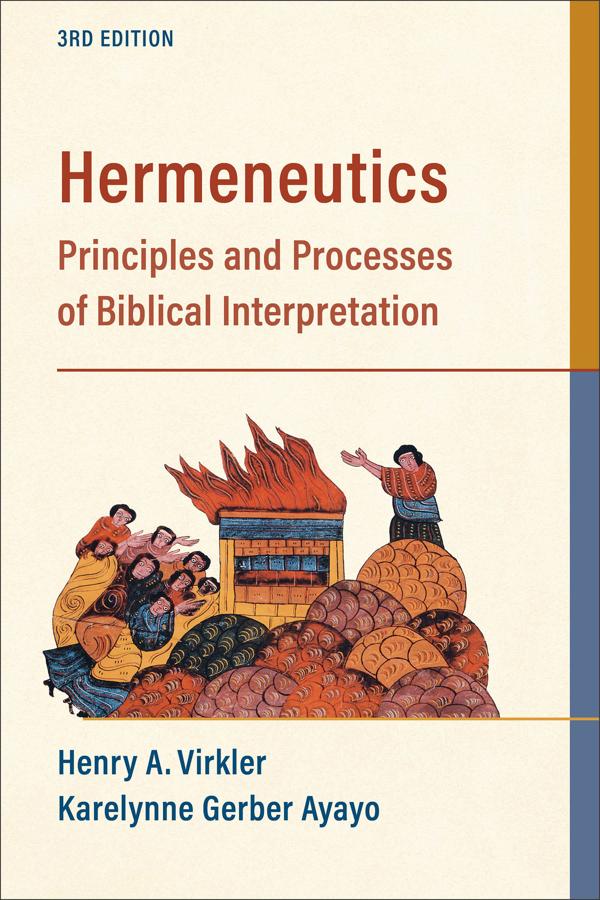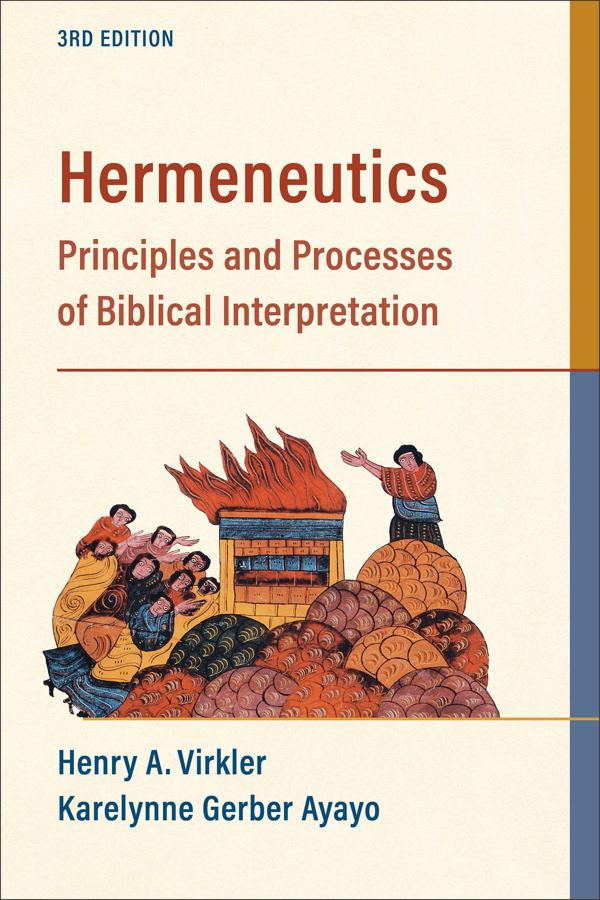
Hermeneutics, 3rd ed.
Principles and Processes of Biblical Interpretation
by Henry A. Virkler, Karelynne Gerber Ayayo
Overview
Welcome!
Student eSources for Hermeneutics, 3rd ed. include suggested answers to exercises and additional handouts. Verified professors can access Powerpoints, sample exams, and sample lesson plans on the downloads page.
A Suggested Teaching Strategy for Professors
Most courses in hermeneutics have been taught with an emphasis on hermeneutical theory, with the majority of class time spent in lectures. The focus of our book is to take that process two steps further by (1) translating that theory into the practical steps needed to interpret biblical passages, and (2) giving students opportunities to practice those steps by interpreting passages or by refuting incorrect interpretations of passages. There are several reasons we recommend this teaching approach.
First, we believe there is biblical warrant for this. Titus 1:9 says that one of the qualifications of church leaders is that they be persons who can teach sound doctrine and are able to refute those who contradict it. In a class where many interpretations (and misinterpretations) are discussed over a period of many weeks, each student gets multiple opportunities to learn how to discuss correct and incorrect interpretations and how to tactfully disagree with other students who may be promoting questionable interpretations of passages. Thus if our role as Bible college and seminary professors is to prepare students, among other things, to meet this Titus 1:9 criterion, this approach to teaching hermeneutics will help accomplish that goal.
Second, there is no other place in the Bible college or seminary curriculum where this process (practicing correct interpretation and learning to respectfully confront incorrect interpretation) will be learned, so we believe the hermeneutics class is the most logical opportunity.
Third, college and seminary students love to discuss and debate, rather than just listen to another set of lectures. We would encourage you to have students learn the theory of hermeneutics primarily through reading the text (and other articles or texts that you add), spend a short amount of time each class answering any questions about the theory they have read, then spend the bulk of the class time sharing their answers to the exercises and discussing/debating with each other the most accurate interpretation. We believe if you try this approach for a semester you’ll find students much more involved and interested in the class than when the majority of class is spent lecturing about hermeneutics at a theoretical level.
There are more exercises than feasibly can be discussed in a standard course lasting one semester or one quarter. We encourage you to choose those exercises that you believe would be most interesting and relevant to your particular class of students, and to add exercises of your own as you see fit.
Overview
Welcome!
Student eSources for Reading the New Testament as Christian Scripture include study questions, videos, and flashcards of key terms. Professors can access additional materials on the downloads page.
If you have questions about how to use these resources, please check out our Frequently Asked Questions.
Chapter 1: The New Testament as Christian Scripture
Study Questions
- How does the NT relate to the OT? How is this understanding different or similar to the way you thought about the two Testaments before reading this chapter?
- Why is it important that we call the OT and NT “Scripture”? How does this influence the way we read them?
- What is the definition of “canon”?
- Memorize Matthew 5:17.


